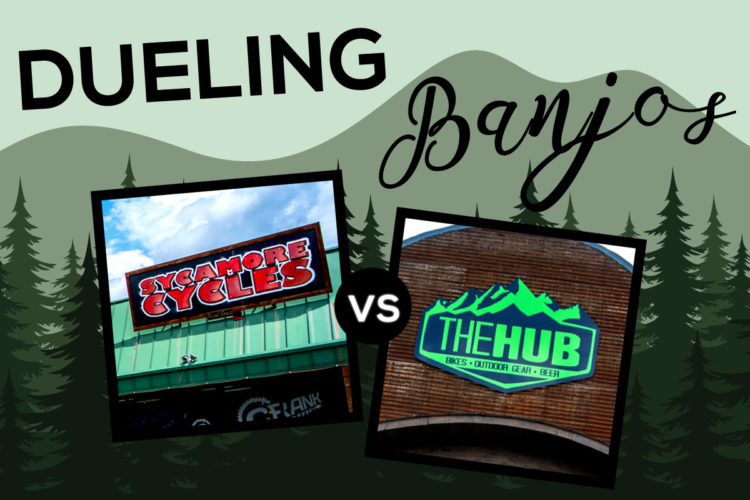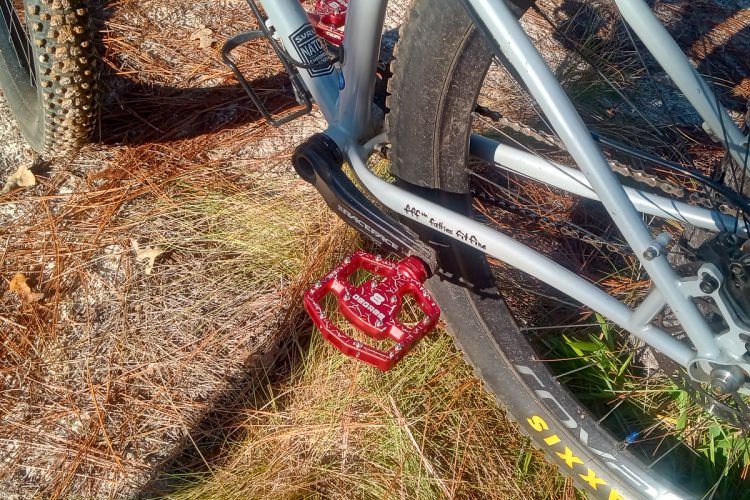5. Forcing the Sale
A roadie is offered a full-face helmet, a customer walks out the door with the wrong-sized frame, a commuter is talked into a mountain bike, and a newbie spends hundreds more than she was prepared to. What do these four customers have in common? They patronized a bike shop who pushed what they had on hand, rather than having the customer’s best interest in mind. I am more likely to discontinue my business with a shop that pushes their product than I am a shop that admits their limits but is willing to take the time to find the right part, bike, or size, even if it means sending me down the road to get what I really need.

6. Not Going the Extra Mile
“Imagine 3 mechanics standing around doing nothing 30 minutes before closing. I walk in holding a rim and hub, asking for measurements so I can order spokes, only to be told this is a complicated process and I can pick up my stuff tomorrow. So, I drove down the road to another shop where they, in less than 30 minutes, measured everything and cut the spokes for me.”
So, exactly how long is the extra mile? The difference between what customers expect and how far a shop is willing to go beyond their standard service varies immensely. Complicating things further, no two shops measure the extra mile with the same stick. Regardless, 4 and 5-star reviews are chock-full of experiences where a shop went above and beyond the call of duty, making first-time customers instant life-long customers. Within reason, shops should seek opportunities to overachieve. Set customer expectations and exceed them by under promising and over delivering.
7. Not Knowing Your Customer
“He talked in bike jargon then looked confused when we asked what he meant. He seemed annoyed when we asked about the features and how they’re used. Maybe he was in a rush, didn’t think we were serious, or didn’t feel like dealing with such inexperienced bikers. Bottom line: the guy was a jerk.”
Some shoppers know how to measure sag, dial rebound, and tune low-speed compression on their 140mm Fox 34 Float FIT4. Some know they want a 27.5+, Boost 148, with 3″ tires mounted on nothing less than 35mm rims. And some have no freaking idea what I just said. Until you’ve identified the customer’s knowledge base, drop the jargon!
8. Dismissing Customer Insight and Knowledge
“This was obviously not normal wear-and-tear, so I went back to the shop to have them fix it. After explaining the problem, the shop’s wank-du-jour (WDJ, I didn’t get his name), decided I did NOT, in fact, buy my tires there or have them installed there, and the tires were more than 6 months old (i.e. I was lying). The WDJ assured me my tires were heavily worn and are only good for about 30 commutes before they fall apart. This is laughably false, as the tire manufacturer’s website recommends them for ‘high mileage training.’ I contacted the manufacturer myself, who acknowledged the defect and they promptly sent new tires at no cost. I also contacted the shop owner, who acknowledged that the shop had installed the tires six months prior and agreed to mount the replacements for free.”
Most of the time, bike shops know more than you. If they didn’t, you wouldn’t be there. However, in the age of internet consumerism, more information about bikes, parts, service intervals, and warranty is available to shoppers than ever before. This, coupled with shops dealing with multiple bike brands–many with proprietary parts–and a sea of components, means some shops may be at a disadvantage when dealing with a customer’s bike. And that’s okay. What’s not okay is shop employees insisting on being the end-all-be-all on any and all bikes and repairs just because the words “bicycle shop” appear on a marquee outside. Listen to the customer because, like the experience above shows, what good is the shop if a customer finds better service from the manufacturer?
Examining bike shop performance qualitatively or quantitatively using online reviews is by no means science nor is it entirely fair. Customers fail their shops as often as any arrogant, dismissive shop employee could, yet the review process is not a two-way street. The truth is, the majority of shops investigated had a list of mostly 4 and 5-star reviews, indicating the need for an equally in-depth report on “Where Bike Shops Wow Their Customers” (stay tuned!).
It is hoped that with enough 1-star shop reviews, common themes would emerge to assist shops in learning from others’ mistakes, ask questions of their own similar shortcomings, and avoid them all together.
Big thanks to Aaron Mann/@aerospace_cadet for the exclusive artwork!!











3 Comments
Aug 1, 2016
Never went back and the last time I drove by the store, they have "going out of business" sale going on.
Feb 19, 2017
Aug 2, 2016